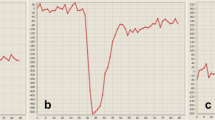Abstract
Fluid-attenuated inversion-recovery (FLAIR) imaging has established its utility in neuroimaging. We propose this imaging sequence as a replacement for proton density (PD) and T2-weighted spin-echo sequences in the follow-up of low-grade glioma. 26 MRI examinations of 18 patients with such tumours were reviewed by three neuroradiologists and a neurosurgeon. FLAIR was found to be superior for appreciation of the lesion (91 % of studies) and for demonstration of its margin (92 %). FLAIR was also better at showing different tumour components, particularly in regions difficult to demonstrate in some planes, such as the vertex in axial imaging. The sequence also defines the postoperative cavity, shows the least amount of susceptibility effect associated with surgical clips, and demonstrates local spread (to white matter tracts, subependymal and capsular) more distinctly. We conclude that FLAIR can replace PD and T2-weighted spin-echo imaging in radiological follow-up of low-grade glioma.
Similar content being viewed by others
Author information
Authors and Affiliations
Additional information
Received: 13 September 1999 Accepted: 4 July 2000
Rights and permissions
About this article
Cite this article
Bynevelt, M., Britton, J., Seymour, H. et al. FLAIR imaging in the follow-up of low-grade gliomas: time to dispense with the dual-echo?. Neuroradiology 43, 129–133 (2001). https://doi.org/10.1007/s002340000389
Issue Date:
DOI: https://doi.org/10.1007/s002340000389




